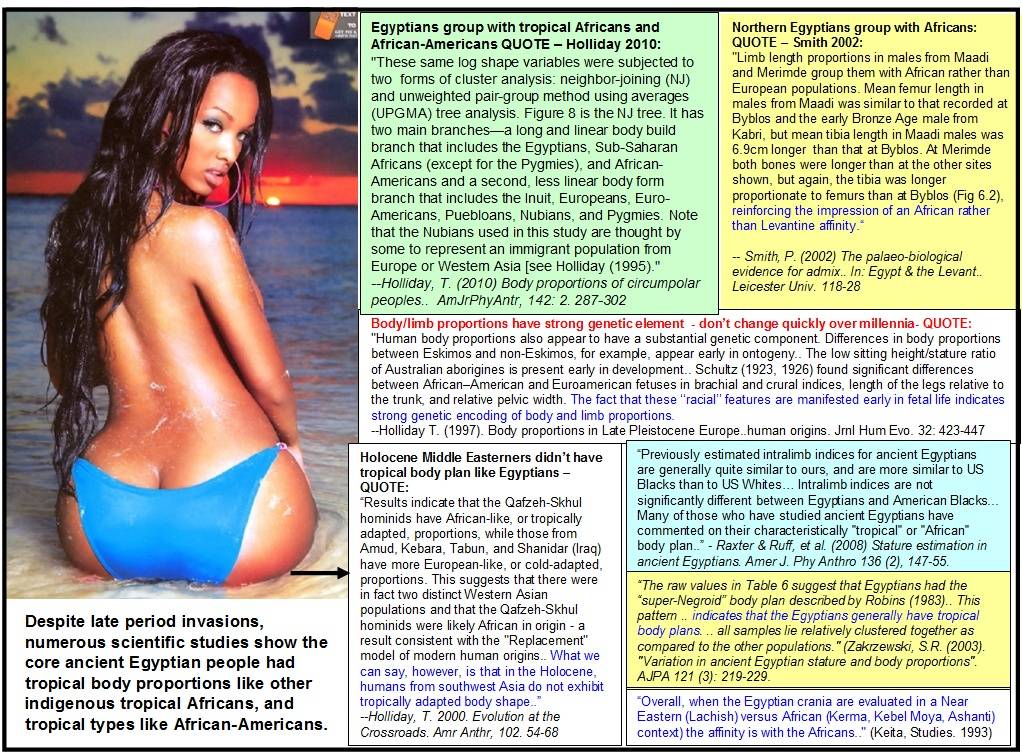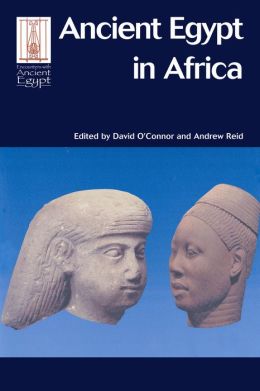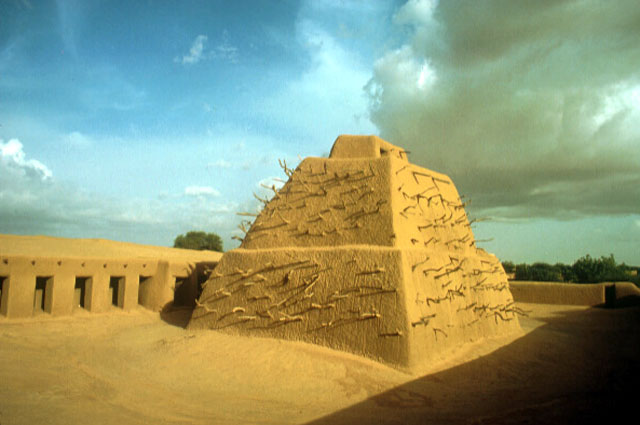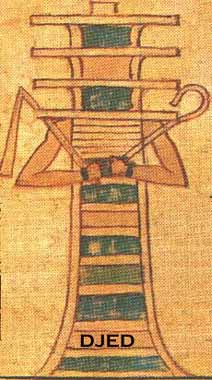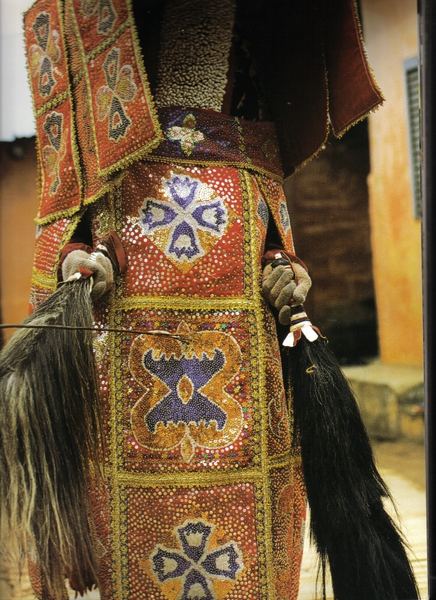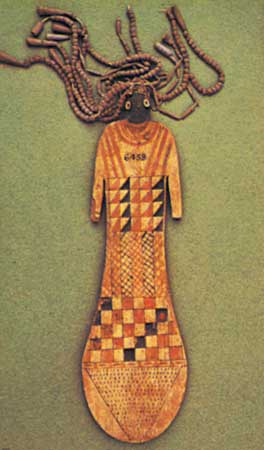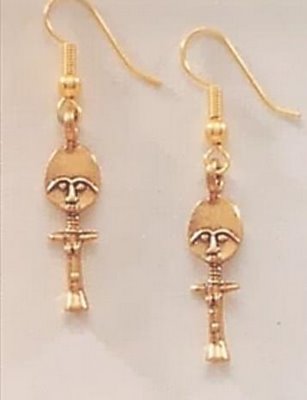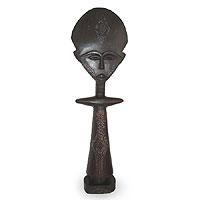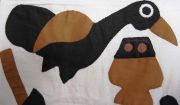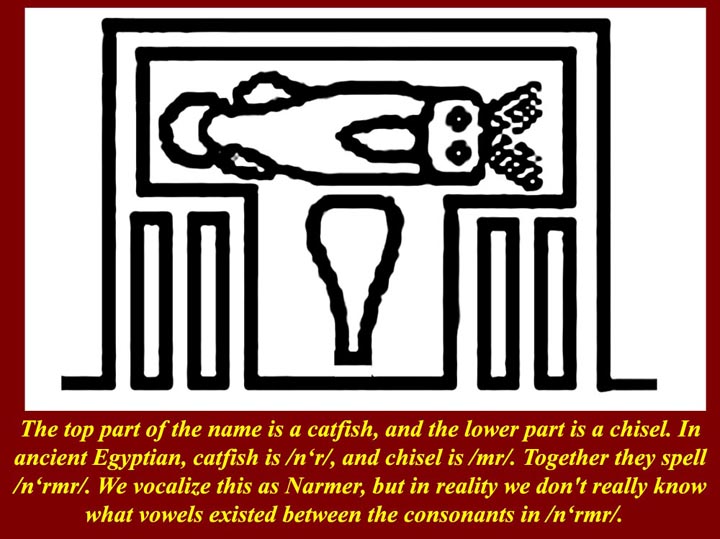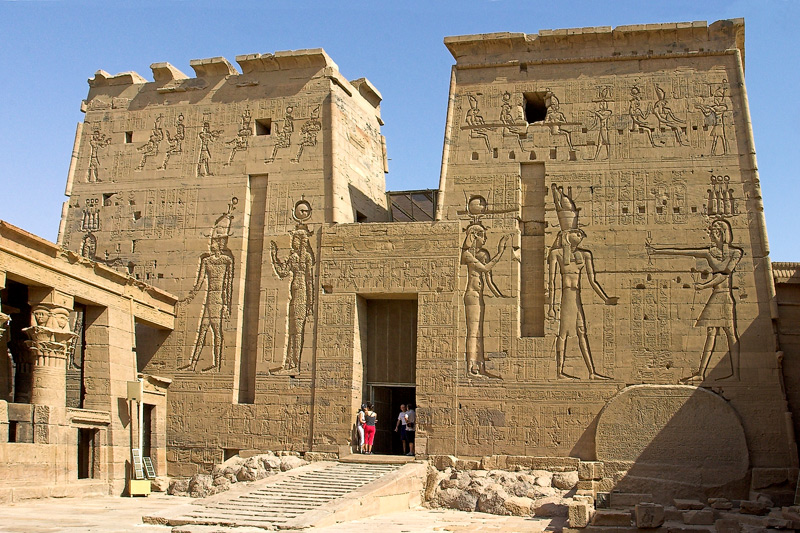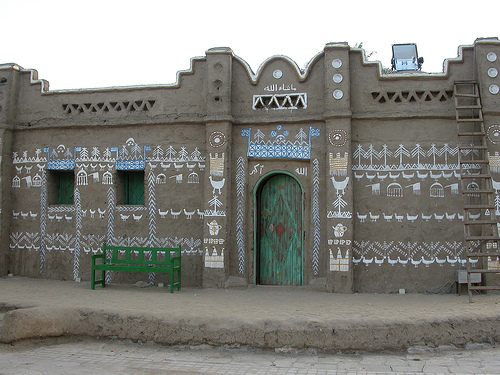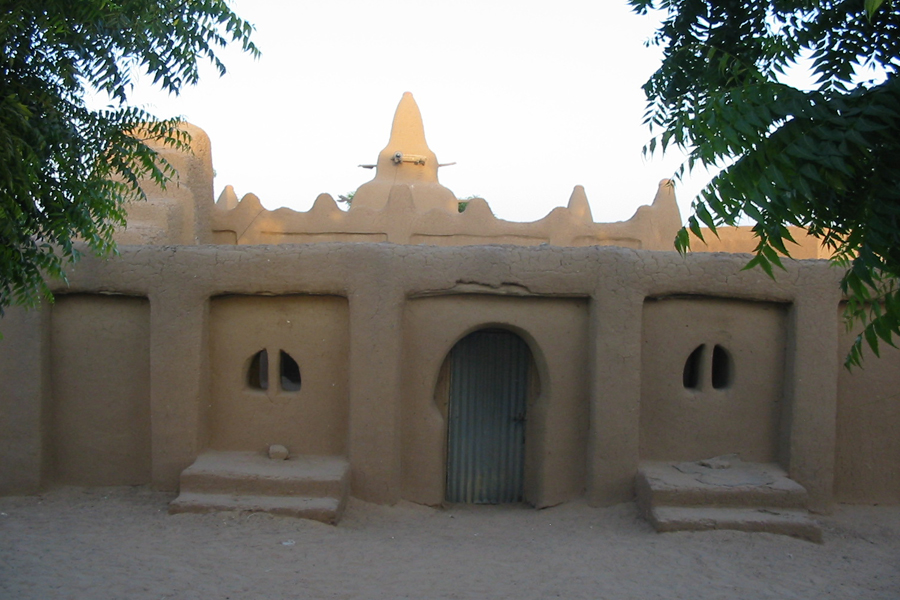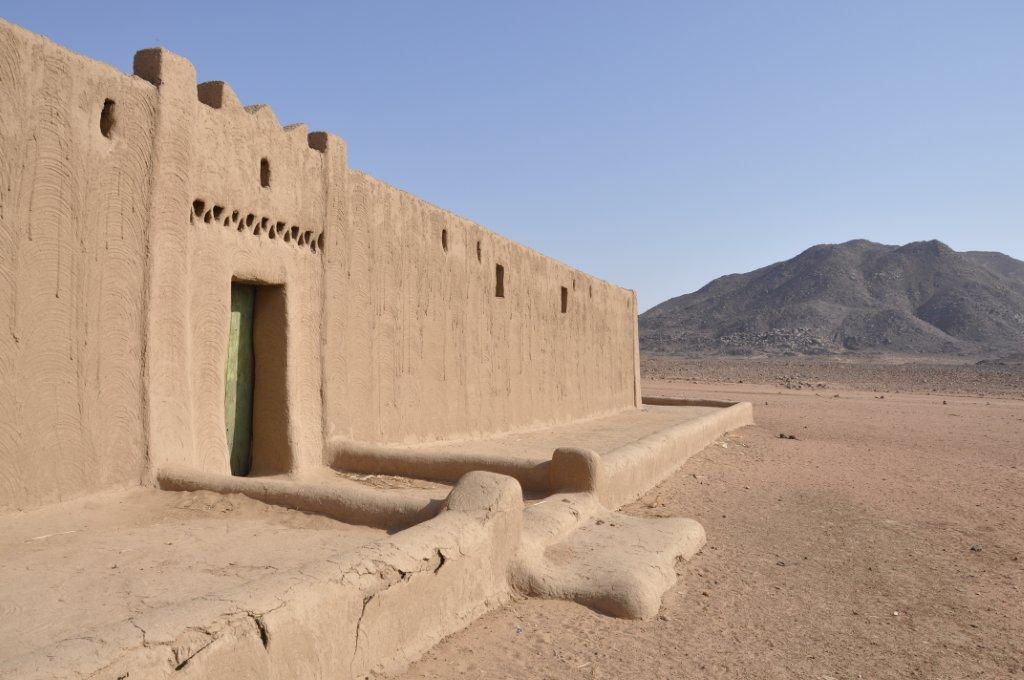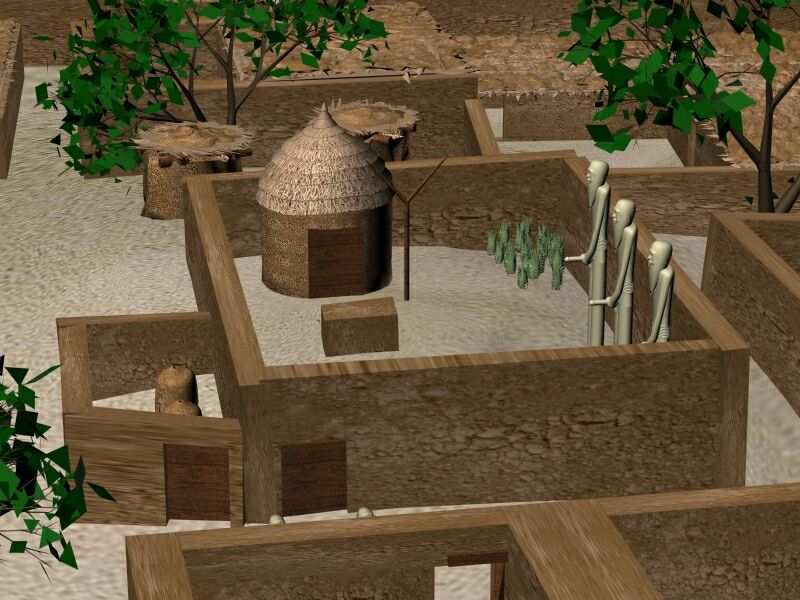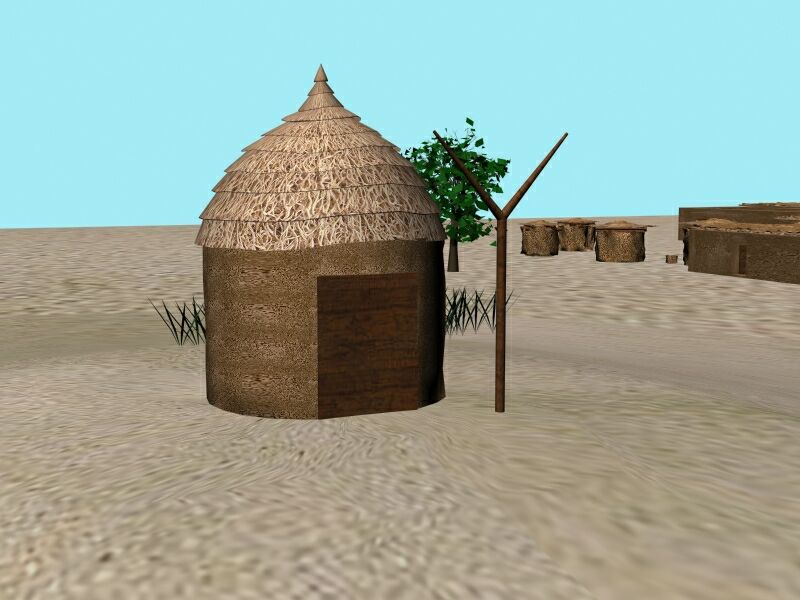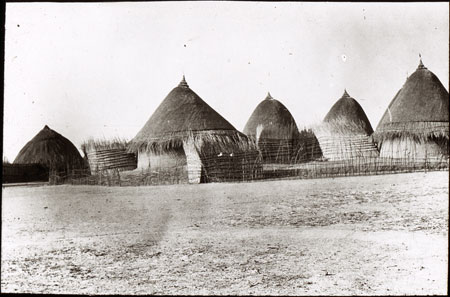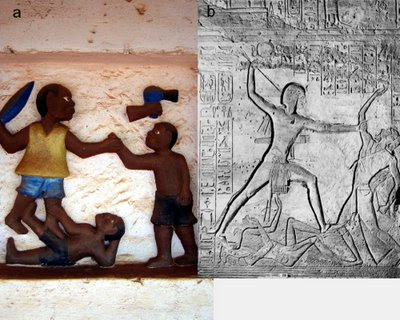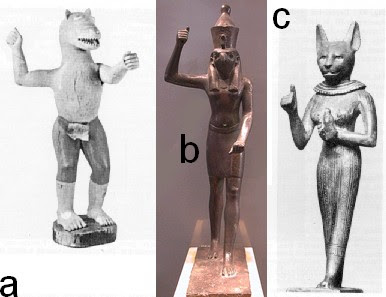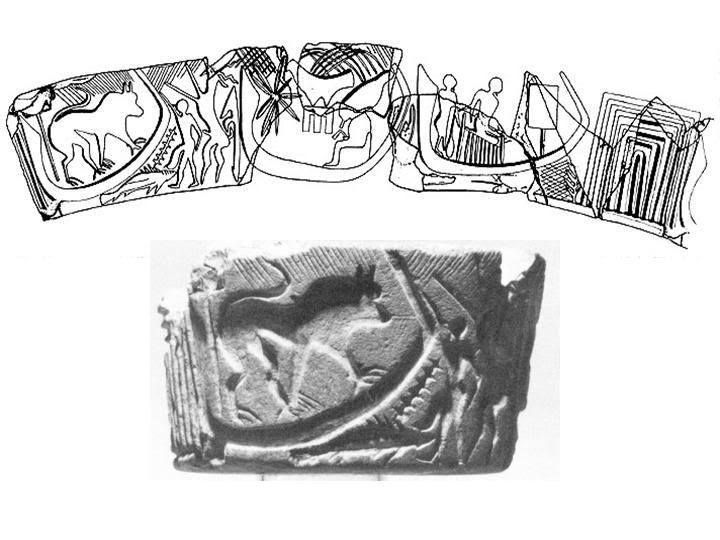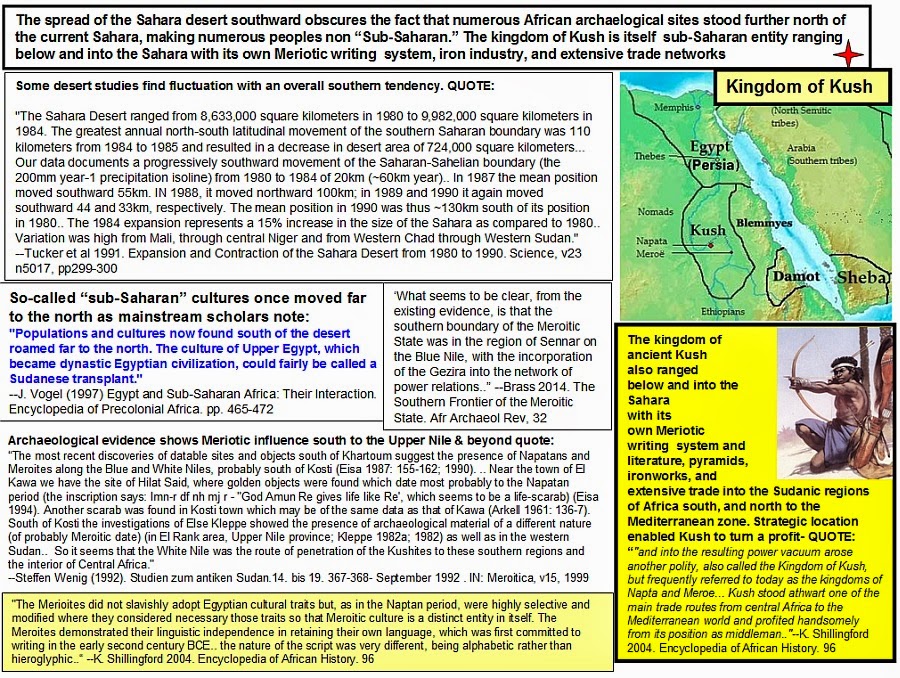Post by zarahan on Nov 22, 2011 8:59:21 GMT -5
Nubians and Egyptians- the close affinities
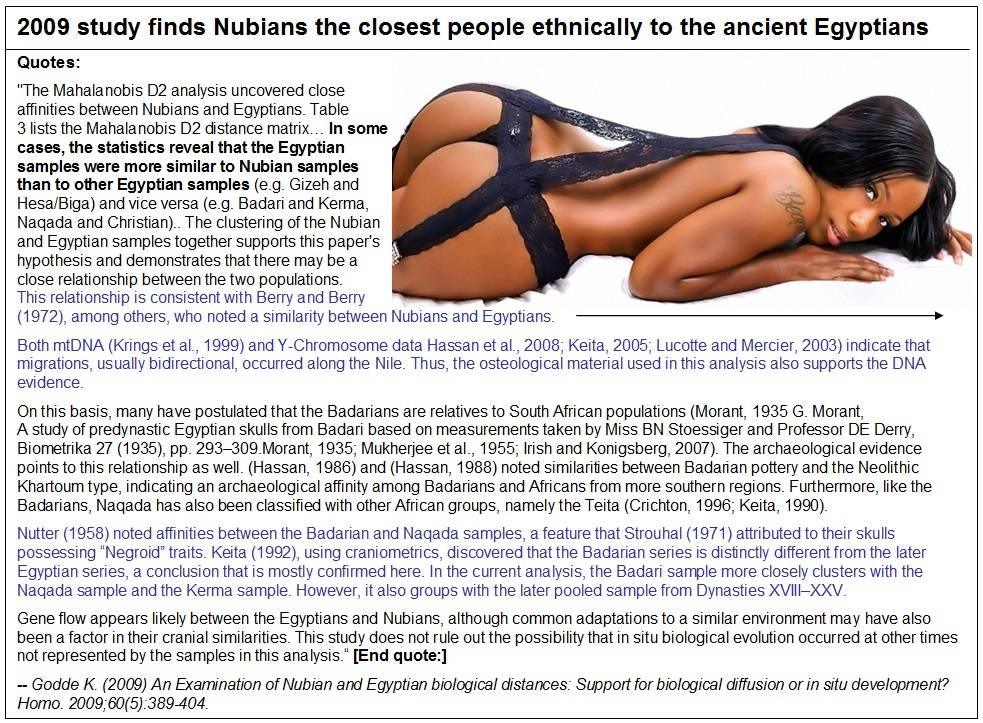
Nubians ethnically the closest to the ancient Egyptians, and share affinities with other tropical Africans. [Quote:]
�In some cases, the statistics reveal that the Egyptian samples were more similar to Nubian samples than to other Egyptian samples (e.g. Gizeh and Hesa/Biga) and vice versa (e.g. Badari and Kerma, Naqada and Christian). .. The clustering of the Nubian and Egyptian samples together supports this paper's hypothesis and demonstrates that there may be a close relationship between the two populations. This relationship is consistent with Berry and Berry (1972), among others, who noted a similarity between Nubians and Egyptians� Thus, the osteological material used in this analysis also supports the DNA evidence. On this basis, many have postulated that the Badarians are relatives to South African populations..
The archaeological evidence points to this relationship as well. (Hassan, 1986) and (Hassan, 1988) noted similarities between Badarian pottery and the Neolithic Khartoum type, indicating an archaeological affinity among Badarians and Africans from more southern regions. Furthermore, like the Badarians, Naqada has also been classified with other African groups, namely the Teita (Crichton, 1996; Keita, 1990)� Nutter (1958) noted affinities between the Badarian and Naqada samples, a feature that Strouhal (1971) attributed to their skulls possessing �Negroid� traits. Keita (1992), using craniometrics, discovered that the Badarian series is distinctly different from the later Egyptian series, a conclusion that is mostly confirmed here. In the current analysis, the Badari sample more closely clusters with the Naqada sample and the Kerma sample.�
-- Godde K. (2009) An Examination of Nubian and Egyptian biological distances: Support for biological diffusion or in situ development? Homo. 2009;60(5):389-404.
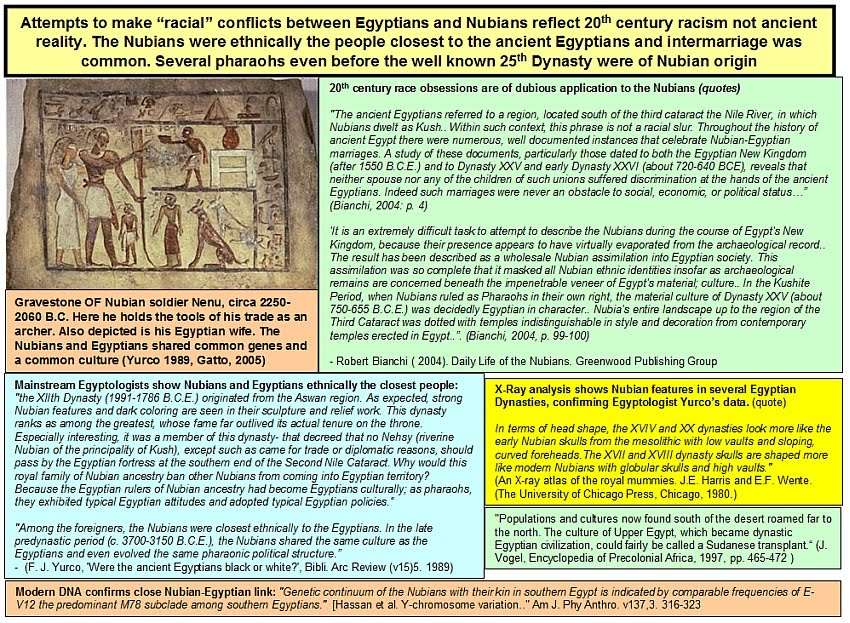
Nubians were ethnically the closest people to the Egyptians. Conflict between the two were typical clashes between kingdoms without the simplistic "racial" models drawn by some 20th century writers.
Quote 1:
"The ancient Egyptians referred to a region, located south of the third cataract the Nile River, in which Nubians dwelt as Kush.. Within such context, this phrase is not a racial slur. Throughout the history of ancient Egypt there were numerous, well documented instances that celebrate Nubian-Egyptian marriages. A study of these documents, particularly those dated to both the Egyptian New Kingdom (after 1550 B.C.E.) and to Dynasty XXV and early Dynasty XXVI (about 720-640 BCE), reveals that neither spouse nor any of the children of such unions suffered discrimination at the hands of the ancient Egyptians. Indeed such marriages were never an obstacle to social, economic, or political status, provided the individuals concerned conformed to generally accepted Egyptian social standards. Furthermore, at times, certain Nubian practices, such as tattooing for women, and the unisex fashion of wearing earrings, were wholeheartedly embraced by the ancient Egyptians." (Bianchi, 2004: p. 4)
'It is an extremely difficult task to attempt to describe the Nubians during the course of Egypt's New Kingdom, because their presence appears to have virtually evaporated from the archaeological record.. The result has been described as a wholesale Nubian assimilation into Egyptian society. This assimilation was so complete that it masked all Nubian ethnic identities insofar as archaeological remains are concerned beneath the impenetrable veneer of Egypt's material; culture.. In the Kushite Period, when Nubians ruled as Pharaohs in their own right, the material culture of Dynasty XXV (about 750-655 B.C.E.) was decidedly Egyptian in character.. Nubia's entire landscape up to the region of the Third Cataract was dotted with temples indistinguishable in style and decoration from contemporary temples erected in Egypt. The same observation obtains for the smaller number of typically Egyptian tombs in which these elite Nubian princes were interred. (Bianchi, 2004, p. 99-100)
- Robert Bianchi ( 2004). Daily Life of the Nubians. Greenwood Publishing Group
Yet more mainstream research shows the ancient Egyptians while proudly pro-Egyptian, did not practice the racism of today's whites, and that Nubians and Egyptians mingled and intermarried freely despite OFFICIAL state dogma regarding foreign "enemies."
"..the Egyptians did not engage in the kind of racial prejudice seen in modern times. Modern racism largely revolves around differences in skin color. In particular, dark skin color was (and with some groups unfortunately still is) a sign of inferiority, regardless of individual achievement and sophistication. Miscegenation, or racial intermarriage, was considered immoral. At its worst, skin color distinguished between slaves and slaves and free people in the American South. In contrast, the ancient Egyptians, and indeed ancient Mediterranean peoples in general, did not make skin color a definitive criterion for racial discrimination (Snowden 1983). Slavery was not connected to race or even class. Royce (1982) notes that ethnic definitions stressing phenotype can inhibit the ability of individuals to cross ethnic boundaries, but the separation of language and culture (costume, hair style, etc) from biological phenotype (skin color, facial features), in social practice if not ideology, meant that foreigners could cross ethnic boundaries.
For example, Nubians like solider and royal confidant Mahirper achieved high position in Egyptian society as long as they assimilated to Egyptian cultural norms. Mahirper was raised at the Egyptian court with the future Pharaoh, and so may have been son of a Nubian prince. He held the important military title 'Fanbearer to the Right of the King." he was buried in the valley of the Kings, a privilege reserved only for kings and there immediate relatives. the burial itself was quote Lavish, with, among other things, high -quality coffins and expensive jewelry, reflecting Mahirper''s wealth and position.. In his Book of the Dead, he appears in every way Egyptian, except for his skin color and facial features (phenotype), which fit the Nubian stereotype.. In a similar way, Nubian mercenaries who settled in Egypt during the First Intermediate Period (c. 2150-2050 B.C.) were depicted on Egyptian funerary stelae in Egyptian dress with their Egyptian wives, but with Nubian physiognomy... Nubians, Asiatics and other peoples married freely with the Egyptians, and slaves were sometimes adopted into Egyptian families, at least among the elite. Asiatic gods and goddesses even found a place in the Egyptian pantheon (Redford 1992). It was the cultural identity of immigrants to Egypt that mattered to their success in Egyptian society, not their skin color or ancestry. Even when foreigners remained culturally foreign, more prosaic sources allowed that foreigners could act in positive ways and be incorporated into the civilized sphere. the ancient Egyptian construction of ethnic identities this reflects cultural chauvinism more than racism."
--Stuart Tyson Smith. (2003) Wretched Kush: ethnic identities and boundaries in Egypt's Nubian empire. Routledge, pp. 22-24
One of Egypt's greatest dynasties, the 12th, originated from dark-skinned Nubian stock, according to conservative Egyptologist F. Yurco (1989). The 12th Dynasty ruled approximately 1000 years BEFORE the well known "black" 25th Dynasty.
Quote 2:
"the XIIth Dynasty (1991-1786 B.C.E.) originated from the Aswan region.4 As expected, strong Nubian features and dark coloring are seen in their sculpture and relief work. This dynasty ranks as among the greatest, whose fame far outlived its actual tenure on the throne. Especially interesting, it was a member of this dynasty- that decreed that no Nehsy (riverine Nubian of the principality of Kush), except such as came for trade or diplomatic reasons, should pass by the Egyptian fortress at the southern end of the Second Nile Cataract. Why would this royal family of Nubian ancestry ban other Nubians from coming into Egyptian territory? Because the Egyptian rulers of Nubian ancestry had become Egyptians culturally; as pharaohs, they exhibited typical Egyptian attitudes and adopted typical Egyptian policies."
- (F. J. Yurco, 'Were the ancient Egyptians black or white?', Biblical Archaeology Review (Vol 15, no. 5, 1989)
"Among the foreigners, the Nubians were closest ethnically to the Egyptians. In the late predynastic period (c. 3700-3150 B.C.E.), the Nubians shared the same culture as the Egyptians and even evolved the same pharaonic political structure."
- (F. J. Yurco, 'Were the ancient Egyptians black or white?', Biblical Archaeology Review (Vol 15, no. 5, 1989)

Nubians ethnically the closest to the ancient Egyptians, and share affinities with other tropical Africans. [Quote:]
�In some cases, the statistics reveal that the Egyptian samples were more similar to Nubian samples than to other Egyptian samples (e.g. Gizeh and Hesa/Biga) and vice versa (e.g. Badari and Kerma, Naqada and Christian). .. The clustering of the Nubian and Egyptian samples together supports this paper's hypothesis and demonstrates that there may be a close relationship between the two populations. This relationship is consistent with Berry and Berry (1972), among others, who noted a similarity between Nubians and Egyptians� Thus, the osteological material used in this analysis also supports the DNA evidence. On this basis, many have postulated that the Badarians are relatives to South African populations..
The archaeological evidence points to this relationship as well. (Hassan, 1986) and (Hassan, 1988) noted similarities between Badarian pottery and the Neolithic Khartoum type, indicating an archaeological affinity among Badarians and Africans from more southern regions. Furthermore, like the Badarians, Naqada has also been classified with other African groups, namely the Teita (Crichton, 1996; Keita, 1990)� Nutter (1958) noted affinities between the Badarian and Naqada samples, a feature that Strouhal (1971) attributed to their skulls possessing �Negroid� traits. Keita (1992), using craniometrics, discovered that the Badarian series is distinctly different from the later Egyptian series, a conclusion that is mostly confirmed here. In the current analysis, the Badari sample more closely clusters with the Naqada sample and the Kerma sample.�
-- Godde K. (2009) An Examination of Nubian and Egyptian biological distances: Support for biological diffusion or in situ development? Homo. 2009;60(5):389-404.

Nubians were ethnically the closest people to the Egyptians. Conflict between the two were typical clashes between kingdoms without the simplistic "racial" models drawn by some 20th century writers.
Quote 1:
"The ancient Egyptians referred to a region, located south of the third cataract the Nile River, in which Nubians dwelt as Kush.. Within such context, this phrase is not a racial slur. Throughout the history of ancient Egypt there were numerous, well documented instances that celebrate Nubian-Egyptian marriages. A study of these documents, particularly those dated to both the Egyptian New Kingdom (after 1550 B.C.E.) and to Dynasty XXV and early Dynasty XXVI (about 720-640 BCE), reveals that neither spouse nor any of the children of such unions suffered discrimination at the hands of the ancient Egyptians. Indeed such marriages were never an obstacle to social, economic, or political status, provided the individuals concerned conformed to generally accepted Egyptian social standards. Furthermore, at times, certain Nubian practices, such as tattooing for women, and the unisex fashion of wearing earrings, were wholeheartedly embraced by the ancient Egyptians." (Bianchi, 2004: p. 4)
'It is an extremely difficult task to attempt to describe the Nubians during the course of Egypt's New Kingdom, because their presence appears to have virtually evaporated from the archaeological record.. The result has been described as a wholesale Nubian assimilation into Egyptian society. This assimilation was so complete that it masked all Nubian ethnic identities insofar as archaeological remains are concerned beneath the impenetrable veneer of Egypt's material; culture.. In the Kushite Period, when Nubians ruled as Pharaohs in their own right, the material culture of Dynasty XXV (about 750-655 B.C.E.) was decidedly Egyptian in character.. Nubia's entire landscape up to the region of the Third Cataract was dotted with temples indistinguishable in style and decoration from contemporary temples erected in Egypt. The same observation obtains for the smaller number of typically Egyptian tombs in which these elite Nubian princes were interred. (Bianchi, 2004, p. 99-100)
- Robert Bianchi ( 2004). Daily Life of the Nubians. Greenwood Publishing Group
Yet more mainstream research shows the ancient Egyptians while proudly pro-Egyptian, did not practice the racism of today's whites, and that Nubians and Egyptians mingled and intermarried freely despite OFFICIAL state dogma regarding foreign "enemies."
"..the Egyptians did not engage in the kind of racial prejudice seen in modern times. Modern racism largely revolves around differences in skin color. In particular, dark skin color was (and with some groups unfortunately still is) a sign of inferiority, regardless of individual achievement and sophistication. Miscegenation, or racial intermarriage, was considered immoral. At its worst, skin color distinguished between slaves and slaves and free people in the American South. In contrast, the ancient Egyptians, and indeed ancient Mediterranean peoples in general, did not make skin color a definitive criterion for racial discrimination (Snowden 1983). Slavery was not connected to race or even class. Royce (1982) notes that ethnic definitions stressing phenotype can inhibit the ability of individuals to cross ethnic boundaries, but the separation of language and culture (costume, hair style, etc) from biological phenotype (skin color, facial features), in social practice if not ideology, meant that foreigners could cross ethnic boundaries.
For example, Nubians like solider and royal confidant Mahirper achieved high position in Egyptian society as long as they assimilated to Egyptian cultural norms. Mahirper was raised at the Egyptian court with the future Pharaoh, and so may have been son of a Nubian prince. He held the important military title 'Fanbearer to the Right of the King." he was buried in the valley of the Kings, a privilege reserved only for kings and there immediate relatives. the burial itself was quote Lavish, with, among other things, high -quality coffins and expensive jewelry, reflecting Mahirper''s wealth and position.. In his Book of the Dead, he appears in every way Egyptian, except for his skin color and facial features (phenotype), which fit the Nubian stereotype.. In a similar way, Nubian mercenaries who settled in Egypt during the First Intermediate Period (c. 2150-2050 B.C.) were depicted on Egyptian funerary stelae in Egyptian dress with their Egyptian wives, but with Nubian physiognomy... Nubians, Asiatics and other peoples married freely with the Egyptians, and slaves were sometimes adopted into Egyptian families, at least among the elite. Asiatic gods and goddesses even found a place in the Egyptian pantheon (Redford 1992). It was the cultural identity of immigrants to Egypt that mattered to their success in Egyptian society, not their skin color or ancestry. Even when foreigners remained culturally foreign, more prosaic sources allowed that foreigners could act in positive ways and be incorporated into the civilized sphere. the ancient Egyptian construction of ethnic identities this reflects cultural chauvinism more than racism."
--Stuart Tyson Smith. (2003) Wretched Kush: ethnic identities and boundaries in Egypt's Nubian empire. Routledge, pp. 22-24
One of Egypt's greatest dynasties, the 12th, originated from dark-skinned Nubian stock, according to conservative Egyptologist F. Yurco (1989). The 12th Dynasty ruled approximately 1000 years BEFORE the well known "black" 25th Dynasty.
Quote 2:
"the XIIth Dynasty (1991-1786 B.C.E.) originated from the Aswan region.4 As expected, strong Nubian features and dark coloring are seen in their sculpture and relief work. This dynasty ranks as among the greatest, whose fame far outlived its actual tenure on the throne. Especially interesting, it was a member of this dynasty- that decreed that no Nehsy (riverine Nubian of the principality of Kush), except such as came for trade or diplomatic reasons, should pass by the Egyptian fortress at the southern end of the Second Nile Cataract. Why would this royal family of Nubian ancestry ban other Nubians from coming into Egyptian territory? Because the Egyptian rulers of Nubian ancestry had become Egyptians culturally; as pharaohs, they exhibited typical Egyptian attitudes and adopted typical Egyptian policies."
- (F. J. Yurco, 'Were the ancient Egyptians black or white?', Biblical Archaeology Review (Vol 15, no. 5, 1989)
"Among the foreigners, the Nubians were closest ethnically to the Egyptians. In the late predynastic period (c. 3700-3150 B.C.E.), the Nubians shared the same culture as the Egyptians and even evolved the same pharaonic political structure."
- (F. J. Yurco, 'Were the ancient Egyptians black or white?', Biblical Archaeology Review (Vol 15, no. 5, 1989)

